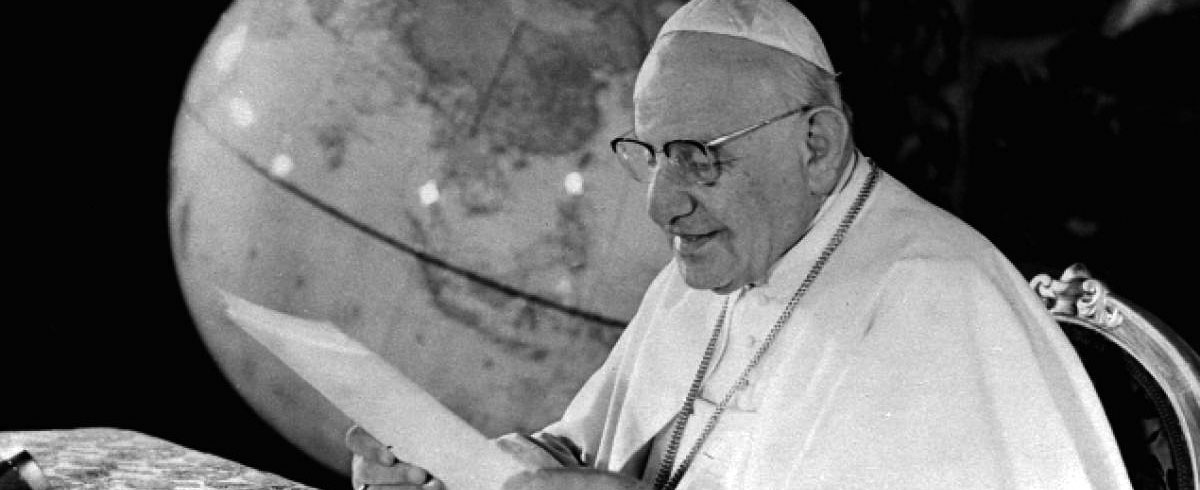
In the early 1960’s, Pope John XXIII, now St. John XXIII, knew that there was great need for change, for reform, in the Church. Therefore he called his brother bishops together for the Second Vatican Council which helped the Church to regroup, to refocus on their mission, and to go back out into the world bringing the presence of Christ to the people.
Following the example of this holy man I’ve formulated the practical steps necessary for making change happen, even in the face of resistance, fear, and adversity. No need to reinvent the wheel when this model has been proven to work.
Seven Steps to Making Change Happen
1. Realize the Need
Okay, I know, this is kind of obvious. Nonetheless, it is an essential step in making change happen. Before change of any kind can be made, you must first acknowledge that change is needed. Remember, that as a leader change or reform is not just because you think your way is a better way, but because the current modus operandi is failing, people are not being served, your mission is not being followed.
When Angelo Roncalli was elected pope taking the name John XXIII, most people thought his pontificate would be short and fruitless. They didn’t expect much from him. Thank God they were wrong. As a trained Church historian, St. John XXIII knew the history of the Church. He knew our weaknesses, our failures, but he also knew our potential and our purpose. So he decided instead of just continuing with business as usual, he would take seriously his role as the shepherd of God’s people and take action to do something about it, in this case calling for the Second Vatican Council.
2. Acknowledge You Need Help
Humility is key to leadership. If you think you are going to make change happen all by yourself, don’t even waste your time. It won’t happen. You need a team. One of the first lessons God teaches us in the Bible is that “it is not good for man to be alone” (Gn 2:18). We need each other. You also need to depend on God. For many times change seems impossible, but “with God all things are possible” (Mt 19:26). Don’t make it about you.
St. John XXIII wanted change for the Church. But he knew it wasn’t about him, his image, or his place in history. It was about the Church, God’s people. He knew that even as pope he couldn’t make the change and reform happen alone. Therefore he turned to his brothers, the bishops, the living apostles of the world to join him in this important endeavor. St. John XXIII would not live to see the Council through to its end, which reveals how important it was to him that it didn’t rely on him.
3. Mobilize the Troops
When you are calling for change a common response is, “You and what army?” We know inside that we need others to help us. Jesus called disciples to follow Him—equipping them for mission and preparing them for battle—and left them to carry on after His ascension into Heaven. In your attempts to make change happen you need to gather a team of like-minded people who are passionate about your mission.
Plans fail when there is no counsel, but they succeed when advisers are many.”
~ Proverbs 15:22

With God at the helm and an army of bishops filling St. Peter’s Basilica, St. John XXIII took it to another level. He could’ve just written an encyclical and sent it out, but that would never have had the same impact as getting the people together. There’s something about having your team together under one roof that creates a bond, a sense of community, of fraternity. And you need that closeness, that togetherness in order to make change happen.
4. Re-Establish Your Mission
Whether the change you are seeking is in your family, your workplace, your parish, or whatever other organization, you need to have a mission, a purpose for existing. Sometimes it is clear what that mission is. Other times it is entirely unknown or forgotten. In these cases, you need to establish or re-establish your mission. What is your purpose? What is your reason for being?
At the Council the bishops re-established that the mission of the Church, the reason for existing was to evangelize, to share the Good News of God’s love and mercy with the world. With this in mind every other deliberation and decision made at the council could be oriented towards and aligned with this mission.
5. Formulate a Plan
Making change, much like winning a war, requires strategic planning, which as we’ve already established is obviously much easier with a team around you. With that team firmly in place and your mission clearly established it is time to put together a plan for achieving that mission. What practical things need to be done to make way for this change or reform? The answer to this question is what your plan should entail.
“Victorious warriors win first and then go to war, while defeated warriors go to war first and then seek to win.”
~ Sun Tzu, The Art of War

The Second Vatican Council was essentially a three-year strategic planning meeting. I know that sounds like a bit much, but this meeting was extremely fruitful. The bishops were focused and determined to make this change happen and so they put in the time necessary to strategically plan in what ways this reform would take place, eventually producing sixteen documents outlining that strategy.
6. Put Your Plan into Action
With your plan finally in place it’s time to take action. The reason we tend to fail in our attempts to make change happen is that in our impatience, which is often mistaken for zeal, we skip steps 1-5 and move straight to action. That’s like going into battle alone without knowing which side you’re on, why you’re fighting, without any strategy or weapons. It’s no wonder we fail.
This I would say is part of where our example of the Council falls short. The implementation and interpretation of the Council is an oft criticized topic. Some say it should be taken as infallible teaching, others take it more lightly as a sort of suggestion. Perhaps we can take this as a lesson to clearly define these things in our plan. How will it be implemented and interpreted? Be specific.

7. Stay Positive
It’s easy to feel like change is never going to happen. That’s the resistance poking it’s head up again, the serpent sticking it’s nose where it doesn’t belong. It’s important to stay positive, to not lose hope. This is when it’s time to pray. Don’t give in to the temptation to quit.
Rinse and Repeat
There is a reason there it was called the Second Vatican Council. Because there was a first. But as time goes by our needs tend to change. Be attentive to these things and don’t think that once you’ve gone through these steps you are done. You shouldn’t see this as a one time thing. You might find it necessary to go back to the beginning or to make changes to your plan. However, don’t get too focused on planning and replanning and replanning without ever putting the plan into action.